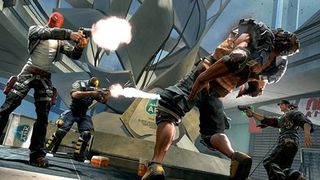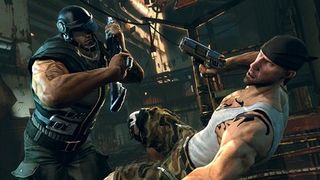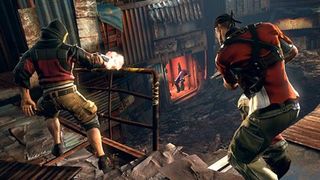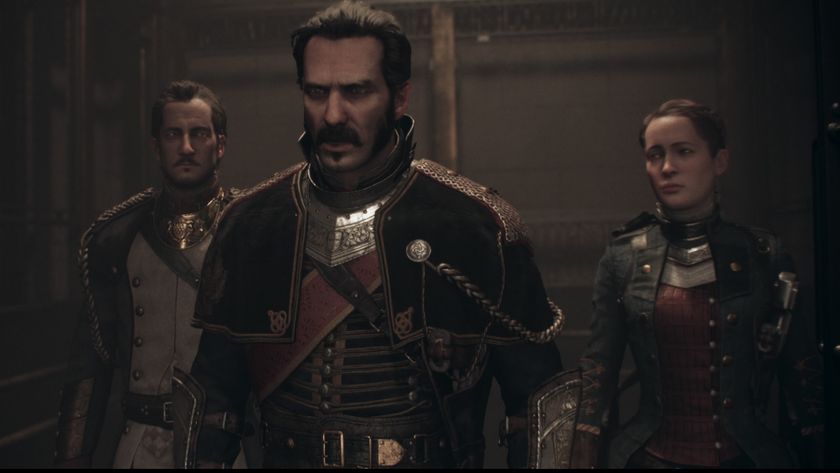Brink – updated impressions
Agile first-person shooting with a customized, persistent avatar
Wedgwood's demo reaches something of a crescendo as both security and resistance clash in a small open area. In order to proceed, somebody must blast through a barricade to allow the defusing bot to trundle onwards. Flicking to a radial menu, a shopping list of objectives fills the screen and Wedgwood settles on the order to destroy the resistance's blockade. It immediately breaks down the objective into steps, the first of which is flagged on-screen: find a command post to change class. Wedgwood will have to slip into the role of a soldier before he can plant the explosives.

In doing so, Wedgwood's appearance changes only slightly. Brink's character creation system means you'll have a customised, personalised character upon which you can layer your unlocks and new items – visual class indicators work around the character you've designed.
“What's cool about having a persistent character is that you invest in him,” explains Stern. “That's why we make such a big effort in character customisation. That's your guy, he represents you and your status and what you've chosen to unlock, which is why we've gone foaming nuts in terms of the avatar customisation. Tim Applebee, our lead character artist, created Commander Shepard from Mass Effect, and he comes out with this crazy stuff. So no two players will look the same.”

Compare this to the similarly co-op driven Borderlands, inwhich every player must choose from only four player models, and you'll begin to understand why Splash Damage are working hard to getBrink's customisation engine right. Stand it next to something like Team Fortress 2 though, with its meticulously designed and highly identifiable characters, and you might wonder if the ability to give everybody afros might affect gameplay.
“It's actually a lot of data to send over a network,” says Stern, “and with consoles there's no server, it's all peer-to-peer. We spent a long time getting the technology together to make that work well. With some other, very good games you've got to choose one of four player models, but with Brink it's your guy, and everybody gets to see what you've done and what you've chosen. We still make it plain who's on whose team and what class they are, stuff like silhouettes and backpacks and belts – even with the customisation, the belt and the back are left relatively bare, so we can put stuff on there to change your silhouette - there'll be something poking out somewhere to make you identifiable.”

The fever pitch continues in Container City as Wedgwood's character slides into cover, ducks through makeshift windows and flings grenades. Hails of gunfire ping off every surface, XP bonuses leap from the deceased, and we all begin to suspect he's using some kind of God mode. The frontline continually shifts forward as objectives are met, though at all times you can forgo responsibility and treat Brink as a straightforward deathmatch. There's even stuff to do for the medic class beyond the endless rush to electrify downed teammates back to life.
Sign up to the 12DOVE Newsletter
Weekly digests, tales from the communities you love, and more
Steve Hogarty is a London-based freelance journalist covering games and technology. His bylines have appeared in publications including GamesRadar, The Independent, Yahoo, VICE, Eurogamer, and more. He is also the co-host of the pocast, Regular Features.
Most Popular








